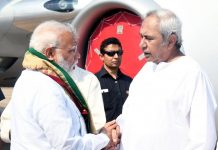Bhubaneswar: There is a misconception about royalty and the royal family that it is only restricted to the palaces and luxurious lives, the visualization comes to mind that there would be thrones, swords, crowns, servants and dancers all around. But the reality is not just limited to all this. If seen minutely, the love and reverence the people still give to the royal families indicates the deep and unbreakable bond the royal families have with the people as well as the society. The royal families in India were not flown by the knight operators to stay for some years with the intent to rob India. People commonly think that the kings and the Britishers, together as a team have only exploited the Indians. This has also happened certainly in some cases. But it is not a generalized fact for every royal family.
The royal families have been there for centuries. There are more than 550 royal families in India. Certain exploitative actions have occurred in the history. However, it is not correct to generalise every royal dynasty and their contribution to the nation. Today also the royal families get love and respect from the people as in earlier times, even if they don’t have any power, throne or control. This is the sheer example that states the relation between the people of India and the royalties. In the history of India when democracy came to the system, it was a bloodless democracy, unlike the partition. There were no deaths, wars, quarrels and bloodshed when the 550 royal kingdoms or states gave away their state and throne for one unified India. So to say it was the biggest sacrifice, the sacrifice of power and identity. So it was a very peaceful transition. After the time of privy purses, the royal families accepted democracy gracefully. No royal family, till today would discredit that decision. It was a determined decision and it continues to be the belief system that India is one and it needs to be a democracy.
During the post-independence era, the pressure on the royal families was huge because there was a strong notion amongst the people that royalty meant exploitation, cruelty, drunkard, debouched, etc. The negative connotation about the royal family was so much imprinted in the minds of the people that it had created a universal dislike towards the royalties. The reason for this would be the nationality and the emergence of national movements, to create a unified identity which resulted in dislodging and demeaning the factors that came its way. In those times the royal families were reluctant to reveal their identity as royals because of this negative impression. People were in the minds that these were the dynasties who had sold our country to the Britishers.
The royal families have always been adaptable to newness, changes and political situations. For instance, post privy purses, the time was such that it was very difficult for the royal families to maintain their lifestyle, and live as common people as they had no royal power and the wealth tax was implemented by the Indian government. Many previous Indian, antiques were sold out by the royal families either at very meagre prices or to foreign countries. Those were the assets of India to preserve its culture, art, craft and priceless artefacts. It is not about losing gold or silver, it is about the assets which were solely belonged to India, made in India went to other countries, were lost and could never be retrieved.
The royal families were ashamed of the fact that they had to maintain a particular standard of living by selling off their precious belongings. So these items were usually sold outside the country. If it had not happened that way, those things, gold, silvers and various precious materials would have been in our national museum giving us a sense of pride in our nation’s history and culture. It could have given the young India a glimpse of our arts, industries, crafts, and so on. Many of those things were taken away by the foreigners, and many were out to them at the lowest price. So much gold and silver was possessed by the royal families that they were unable to pay the tax for that much value of the gold. All these items were lost in the cost of maintaining the standard of living, paying the taxes etc.
When the privy purses were in the 1970s, the royal families became eligible to pay wealth taxes like the common mass, they gradually found their ways to earn a livelihood through various businesses like turning their palaces into luxury hotels, and other business hubs. As the royal palaces were not just a house for the kings and queens but there were many people who were getting employments, children were raised, destitute women getting shelters, widowed women getting livelihood and so on. So by converting those palaces to hotels it retained the employment and source of livelihood for those people. So after 1970s many of the royal families decided to convert their properties to luxury hotels.
The royalty in general is adaptable to change and varied situations. The Indian royal dynasties were very peaceful, people’s friendly institutions. There were no cases of attempts of assassination or revolt from the people in any era in our history. It indicates the attractant, empathetic relation between the king and the people. The royalties were aware of the needs of their people.
The royal families used to run during the pre independence period as the present government runs the country. There were educational institutions, agriculture, land revenues, taxes collected from the small kingdom etc. At that period, there was a sense of nationhood and connection with the community in the hearts and minds of the royalties. That is the reason the people in the region give that amount of respect and love to the royalties. They keep their faith and confidence with the royal families as their leaders.
It is undeniable that India was way progressed and economically advanced during the era of kings and royalties. The planning, financial systems were very much progressed . The banking system was very much established from those periods. The financial decisions were very much practical , saving the money for the educational marriages of the children was a norm .
-OdishaAge



















